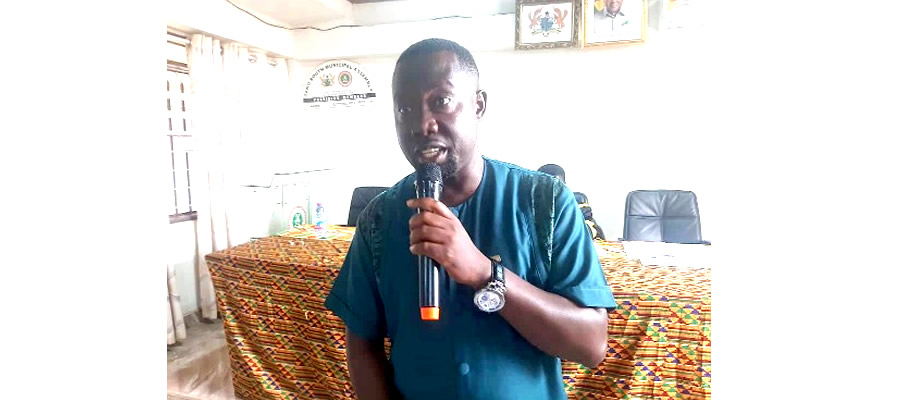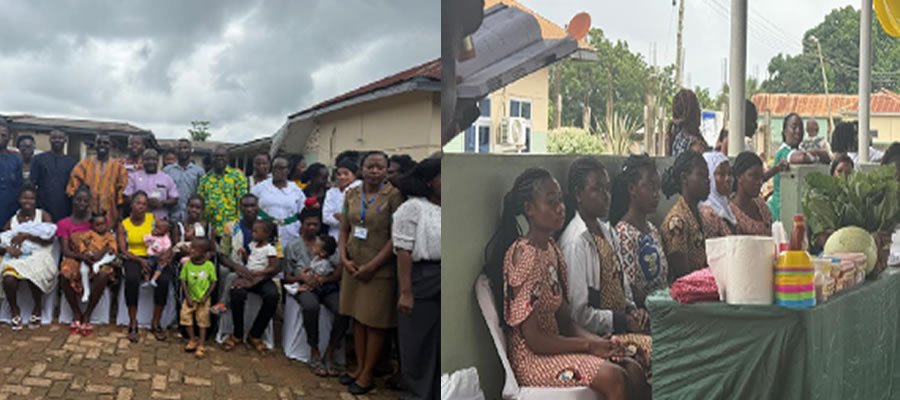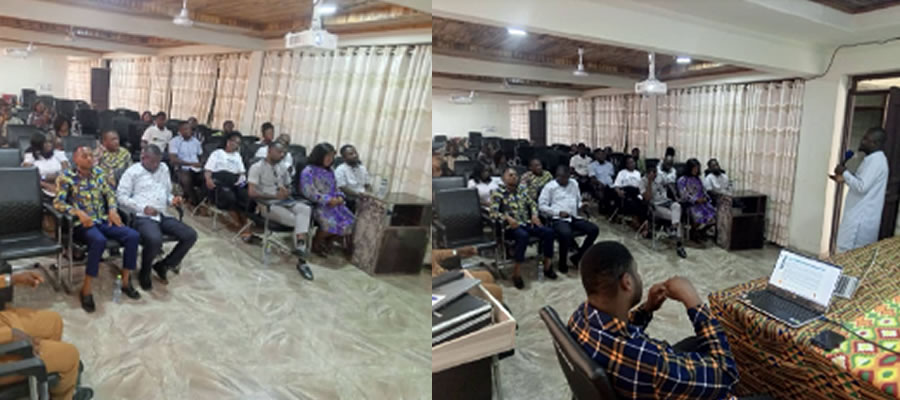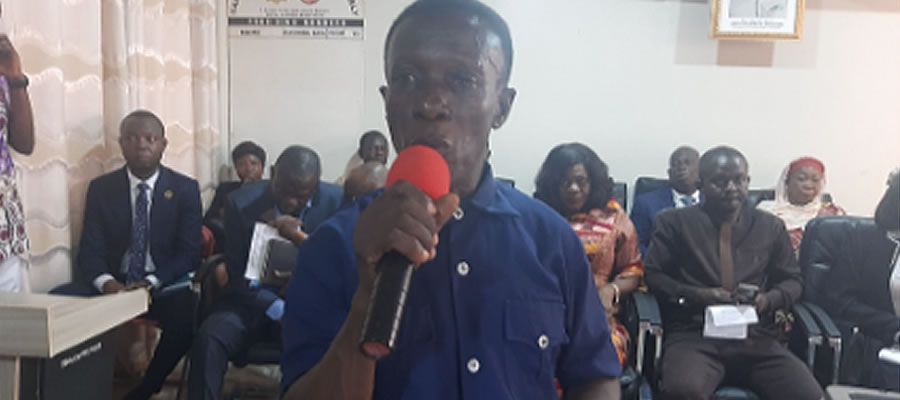

Forums were organized in the various electoral areas and Area Councils. The purpose was to enable the people to come out with their development needs and aspirations. The results are summarized in Table 1.42.
Harmonized Community Needs
From the interface that the DMTDP Team had with the various Area/Town councils each community Needs were captured. From this community needs, Area/Town council needs were prepared, which yielded the seven Area/Town council needs. Based on this, the needs for various Area/Town council were aggregated into the whole needs for the various are (Area/Town councils under the District.)
To be able to prioritize these harmonized needs under the District, the guide provided for the preparation of the DMTDP was used which directs that:
- Needs that are still out-standing in the previous plan should be given ‘2’ which implies strong linkage with the current need.
- Needs that are almost completed in the previous plan should be given ‘I’ which implies week linkage.
- Needs that are not contained or completed in previous plan should be given O, which implies no linkage. Based on the above ranking method the needs under each of the Thematic Areas of GPRS II were compiled, as shown in pages 88 to 90 from the weight stated above, the total under all the needs for each thematic area is given and divided by the total number of all the needs in the District. From this calculation, Human Resource Development emerged the first, followed by, Private Sector Competiveness and finally, Good Governance. The list of the harmonized community needs is shown in page 87.
Programmes For The Vulnerable And Excluded
Special Education
To reorient and mainstream the vulnerable and the excluded in the District, a lot of interventions have been made in this direction. The Tano South Municipal is potentially endowed with the establishment by Government of Ghana, the Bechem School for the Deaf which is one of the main agents for making the physically challenged productive in the District.
The School provides basic education and technical skills in the areas of carpentry, dressmaking and metal–work. It is worth mentioning that World Vision International and Action Aid Ghana have contributed significantly to the provision of infrastructure, machines and equipment as well as library and its accessories to the school. The school caters for both boys and girls, giving all of them equal opportunities for development and livelihood.
Table 37 shows the enrolment, programmes and other information of the School. Bechem School for the Deaf is the only one out of the 14 Schools for the Deaf nationwide which runs the following technical programmes:
1. Carpentry and Joinery
2. Metalwork
3. Fashion
4. Home Economics
There is therefore pressure on the school to admit students who have completed their basic education from other schools who want to pursue technical programmes. The Bechem School for the Deaf has enjoyed a lot of assistance for various activities/projects from a number of organisations. These organisations and their supporting projects are shown in Table 38. The following are the most pressing needs of the school at the moment.
- Computer Laboratory.
- One modernised kitchen with facilities for the use of LPG.
- Building for use as an assessment centre to cater for the needs of the District and beyond.
School Children and the Aged
We can also identify other vulnerable groups like school children who are made to work on their parents’ farms during the major farming season. Likewise, school children who are also made to sell bagged water on market days where they are exposed to all sorts of traffic dangers. We can again identify children of school-going age who are not in school but engage in street potterage.
The other vulnerable group is those aged above 65. These people are affected due to the perception that one needs to travel outside, especially the youth, to seek greener pastures especially in the cities. Most aged are therefore left on their own. One could see an aged women aged 70 years and more walking 2 – 3km to the farm carrying firewood and foodstuff and even selling some of the foodstuff to raise money to buy kerosene for the lantern and fish for her meals. The District Assembly from year 2007 will begin active enforcement of all bye-laws enacted to liberate the vulnerable and the excluded in the District. For instance, bye-laws like pupils not roaming on streets after 8.00pm.
Gender Issues
The Assembly places a very high premium on the issue of women empowerment. It is acknowledged by many that there are so many constraints, ranging from lack of education, poverty, low self esteem, male dominance, violence, religious and cultural factors, inadequate financial resources among others, which are responsible for the low level of women’s participation in politics.
In Tano South Municipal, females constitute more than 50 percent of the total population and form an important human resource base, especially in the rural informal sector. The centrality of women to production and reproduction makes them important agents for development. Despite the crucial role women play in development at the national, community and household levels, they suffer naked disparities in the economic activities that they perform.
Women are usually responsible for domestic work, the care of children, family health, cooking and providing food and other household services. They also play a major role in the productive activities of the family, such as farming, services industries, and income – generating activities. In each of these areas, women’s contributions have not been appreciated and, therefore they have not achieved the required remuneration.
The philosophy of the Assembly on the issue of the empowerment of women is grounded on the quotation from the Inter-Parliamentary Union i.e. the World Organisation of National Parliaments in its 1997 Declaration of Democracy. “The achievement of democracy presupposes a genuine partnership between men and women in the conduct of the affairs of society in which work in equality and complementarily, drawing mutual enrichment from their differences”.
Achieving the goal of equal participation of women and men in decision-making will provide a balance that more accurately reflects the composition of society. In the area of improving access and participation of girls’ education, the Assembly seeks to achieve access, participation, retention and transition of girls. To achieve this, the Assembly shall increase the enrolment of girls in primary schools to equal that of boys, and develop and maintain strategies aimed at ensuring the continuation of girls from primary to Junior Secondary Schools.
The dropout rate of girls in primary schools will also be reduced; while the transition rate of girls from Junior Secondary School to Senior Secondary Schools will be increased. However, some of the main challenges and obstacles facing the promotion of girls’ education in the District are poverty, teenage pregnancy, poor academic performance, desire for quick money and over burden household chores.
The Assembly has undertaken a number of measures to ensure the empowerment of women in all aspect of life. These include:
- The Assembly disbursed sixty (60) percent of the Poverty Alleviation Fund to women. The women are engaged in farming and trading activities.
- The Rural Enterprises Project disbursed ¢1,484,200,000.00 representing 60% of credit disbursed in 2006 to women and female managed enterprises in line with the project’s objective and strategy of strengthening the economic well-being of women at the rural level.
- In an effort to ensure women participating in the just ended District level elections, the Assembly provided assistance to women who were interested in contesting the District level election. As a result of the encouragement and assistance given to the women, their representation at the Assembly increased by 39%. (See Table 39).
- The Assembly has made it a policy that, all Community Water and Sanitation Committees (WATSANs) be made up of fifty percent male and fifty percent female. The WATSANs at the community level are responsible for the management of water facilities and sanitation.
- To promote girl-child education in the District, scholarships and bursaries have been offered to needy but brilliant girls to further their education at the Senior Secondary Schools and the Teacher Training Colleges.
- The District has established a girl – child education unit. More so, a model school for girls has also been established. The primary function of the unit is to promote the education of the girl-child. The strategies / activities include the organisation of the girl-child education week, enrolment drive in communities, durbars and visits to schools, serve as role models. During the celebration of the girl-child week, important women personalities are invited to talk to the girls. They also serve as role models.
- Furthermore, since the inception of the Science, Mathematics and Technology Education (STME) clinics, the Assembly has been sponsoring girls from the basic and the senior secondary school levels. This has greatly encouraged many of the girls to offer science courses / programmes.
- The current existing state of institutions in the District such as National Commission on Women and Development (NCWD), Women and Children Sub – Committee and the Girl – Child Education Unit will be strengthened to continue to monitor, support and direct up and coming female candidates and also follow-up on them when elected into office by doing the necessary research for them.
- Civil Society Organisations would be encouraged to embark on vigorous fund raising to ensure that the financial burden imposed on candidates are lessened for women. This would encourage women to put themselves up as candidates. If the above is pursued alongside vigorous educational drive and cultural reforms, women would be better empowered sooner or later.
Key Development Problems
- Poverty
- Low self esteem
- Male dominance
- Violence
- Inadequate financial resources
- High dropout rate of girls
- Teenage pregnancy
- Over burden of household chores
- Poor academic performance
Date Created : 11/21/2017 1:38:35 AM












 facebook
facebook
 twitter
twitter
 Youtube
Youtube
 +233 593 831 280
+233 593 831 280 0800 430 430
0800 430 430 GPS: GE-231-4383
GPS: GE-231-4383 info@ghanadistricts.com
info@ghanadistricts.com Box GP1044, Accra, Ghana
Box GP1044, Accra, Ghana